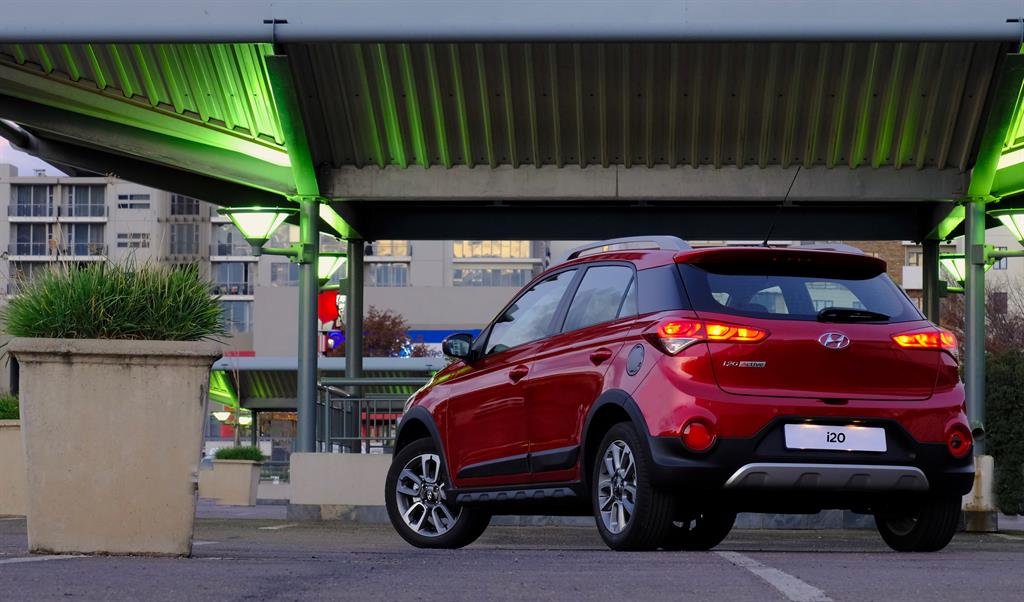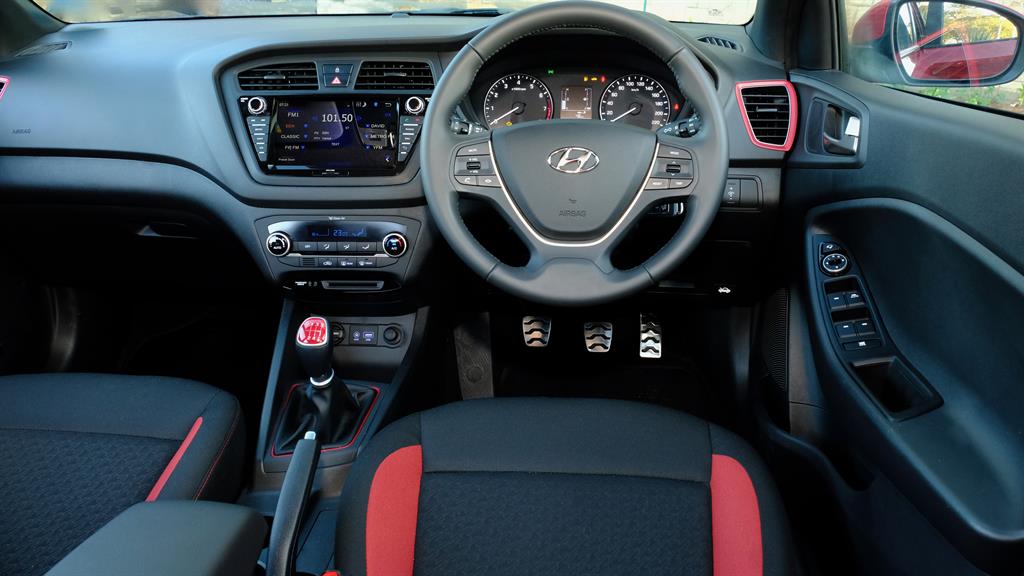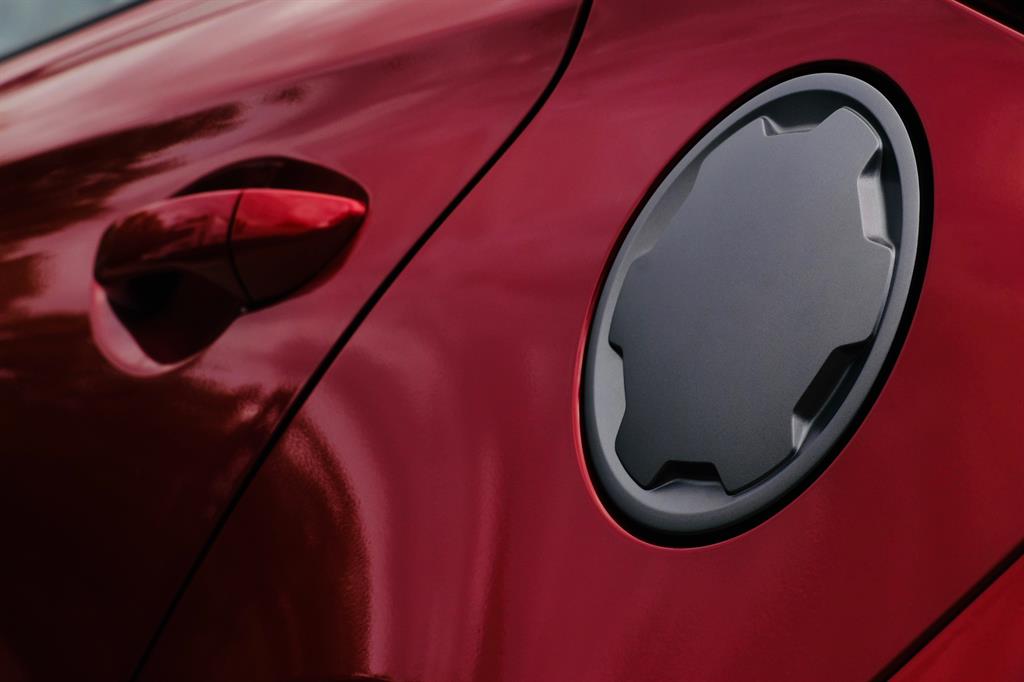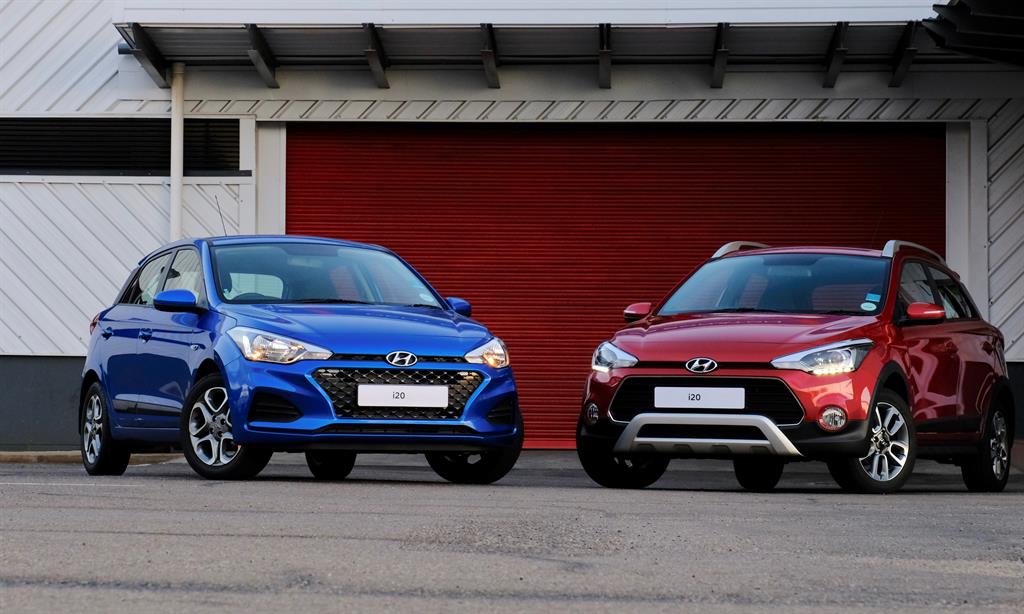Driven: Hyundai's refreshed i20
An Active model has been added to the Hyundai i20 range.
CHARLEN RAYMOND
Since 2009, the Hyundai i20 has been a popular sight on South African roads. The car, one of the Korean automaker’s stalwart products, has become a favourite among local car buyers and has managed to attract 88 000 buyers.
For 2018, Hyundai has refreshed its i20 line-up, which also sees the addition of a new Active derivative.
Heading the i20’s charge in Southern Africa, the Active stands slightly higher in its boots than its siblings and does it indeed look the part to see to the needs of those with an active lifestyle.
Changes in brief
The revised i20 range, including the new Active variant that replaces the outgoing 1.4 Sport, has a new face. The large grille is bent inwards towards the bottom, and the fog lights have been incorporated into the front panels.
The two grille strips running below atop and below the bigger grille remain, but their presence is just a tad less prominent. The headlights have also been redesigned and on the Active these house LED units that turn with the direction of the steering wheel at night.
At the rear the number plate has been moved to right under the badge and the rear light design is also slightly bigger. The latch to open the boot by hand is also under the badge.
The rear bumper also sees a redesign and a black insert now houses the reverse lights, as well as rear fog lights. Hyundai retained the brake light atop the spoiler.
The seats of the Motion and Fluid models are covered in cloth, but the Active’s interior offers either blue or red inserts. Electric windows are standard across the range, except for the three more affordable models that only feature this for the front windows.
The multimedia screen features touchscreen technology but to have satellite navigation (with SD card) fitted is a N$2 500 optional extra. The range also does not come with cruise control as standard.
1.4 Active
Hyundai opted to remove the top-of-the-range 1.4 Sport manual from the equation and replaced it with the 1.4 Active. The Active’s design tweaks are immediately apparent.
Opposed to the standard models’ front grille that has a bending effect, the Active’s grille reaches outward and features horizontal running bars. The front bumper houses big, round fog lights, as well as a big, plastic diffuser for a more rugged look.
Along the side there are black side skirts and roof rails makes carrying extra luggage a bit easier.
Keen-eyed observers would have noticed that the Active’s design strongly mimics that of the outgoing range and one does wonder why Hyundai has not implemented the same design ethos of the new range on the new model.
Perhaps the outgoing design allowed for better implementation of the “active” look. And though it’s not a train smash, the new leader of the pack should have led the charge from a design perspective too.
Kudos to Hyundai, though: the Active does not look out of place among its siblings.
Gravel and tar
Across the entire range, Hyundai fitted the cars with McPherson struts for the front suspension and a torsion beam axle at the rear. This aided the cars with good road-holding characteristics and gave it a compliant ride quality over various surfaces.
First up was the Active. Powered by a 1.4-litre engine (74 kW/133 Nm), the car had to first deal with the notorious Franschhoek Pass, and thereafter a good gravel strip that lasted for roughly 40 km.
On the gravel the Active had no problem relaying its power to the road and the front-wheel-drive system did well to keep power in check. The six-speed manual gearbox felt smooth and the cogs engage without hassle or strain.
Sliding about was virtually non-existent (thanks in part to the rain that hardened the ground) and respectable speeds could be achieved. Hyundai said it improved the i20’s road holding and it shows; despite the Active’s 170 mm ground clearance.
Sound insulation is also very good but the roof rails do create a bit of wind noise at speed.
The other model available for sampling was the 1.2 Fluid, fitted with a 1.2-litre engine (61 kW/115 Nm) and five-speed manual gearbox. Obviously not as sprightly as the Active, the car’s on-road dynamics reminded very strongly of that of the Hyundai Grandi10.
Nippy reactions and light steering feel all contributed to a relaxed experience from behind the wheel. Out on the N2 the car maintained its momentum without hassle - of course, it didn’t carry a load - and did well to scale the Franschhoek Pass on the return leg of the launch.
During spirited driving the car exhibited strong tendencies of under-steer, but driven with modulated gusto and steering input around bends proved to be the driving style of choice.
Summary
The revised Hyundai i20 range will remain a strong pillar in the carmaker’s local line-up. The value-for-money proposition it offers compares strongly, and at times even betters what its rivals can conjure.
Against its regular rivals, like the Volkswagen Polo and Toyota Yaris, the i20 is well positioned.
The Active will probably be the more popular model in the range, but those keeping their budgets in check will not be left discouraged by choosing one of the other models. There is a case to be made for the revised Hyundai i20 and it certainly makes a very strong one. - Wheels24
Since 2009, the Hyundai i20 has been a popular sight on South African roads. The car, one of the Korean automaker’s stalwart products, has become a favourite among local car buyers and has managed to attract 88 000 buyers.
For 2018, Hyundai has refreshed its i20 line-up, which also sees the addition of a new Active derivative.
Heading the i20’s charge in Southern Africa, the Active stands slightly higher in its boots than its siblings and does it indeed look the part to see to the needs of those with an active lifestyle.
Changes in brief
The revised i20 range, including the new Active variant that replaces the outgoing 1.4 Sport, has a new face. The large grille is bent inwards towards the bottom, and the fog lights have been incorporated into the front panels.
The two grille strips running below atop and below the bigger grille remain, but their presence is just a tad less prominent. The headlights have also been redesigned and on the Active these house LED units that turn with the direction of the steering wheel at night.
At the rear the number plate has been moved to right under the badge and the rear light design is also slightly bigger. The latch to open the boot by hand is also under the badge.
The rear bumper also sees a redesign and a black insert now houses the reverse lights, as well as rear fog lights. Hyundai retained the brake light atop the spoiler.
The seats of the Motion and Fluid models are covered in cloth, but the Active’s interior offers either blue or red inserts. Electric windows are standard across the range, except for the three more affordable models that only feature this for the front windows.
The multimedia screen features touchscreen technology but to have satellite navigation (with SD card) fitted is a N$2 500 optional extra. The range also does not come with cruise control as standard.
1.4 Active
Hyundai opted to remove the top-of-the-range 1.4 Sport manual from the equation and replaced it with the 1.4 Active. The Active’s design tweaks are immediately apparent.
Opposed to the standard models’ front grille that has a bending effect, the Active’s grille reaches outward and features horizontal running bars. The front bumper houses big, round fog lights, as well as a big, plastic diffuser for a more rugged look.
Along the side there are black side skirts and roof rails makes carrying extra luggage a bit easier.
Keen-eyed observers would have noticed that the Active’s design strongly mimics that of the outgoing range and one does wonder why Hyundai has not implemented the same design ethos of the new range on the new model.
Perhaps the outgoing design allowed for better implementation of the “active” look. And though it’s not a train smash, the new leader of the pack should have led the charge from a design perspective too.
Kudos to Hyundai, though: the Active does not look out of place among its siblings.
Gravel and tar
Across the entire range, Hyundai fitted the cars with McPherson struts for the front suspension and a torsion beam axle at the rear. This aided the cars with good road-holding characteristics and gave it a compliant ride quality over various surfaces.
First up was the Active. Powered by a 1.4-litre engine (74 kW/133 Nm), the car had to first deal with the notorious Franschhoek Pass, and thereafter a good gravel strip that lasted for roughly 40 km.
On the gravel the Active had no problem relaying its power to the road and the front-wheel-drive system did well to keep power in check. The six-speed manual gearbox felt smooth and the cogs engage without hassle or strain.
Sliding about was virtually non-existent (thanks in part to the rain that hardened the ground) and respectable speeds could be achieved. Hyundai said it improved the i20’s road holding and it shows; despite the Active’s 170 mm ground clearance.
Sound insulation is also very good but the roof rails do create a bit of wind noise at speed.
The other model available for sampling was the 1.2 Fluid, fitted with a 1.2-litre engine (61 kW/115 Nm) and five-speed manual gearbox. Obviously not as sprightly as the Active, the car’s on-road dynamics reminded very strongly of that of the Hyundai Grandi10.
Nippy reactions and light steering feel all contributed to a relaxed experience from behind the wheel. Out on the N2 the car maintained its momentum without hassle - of course, it didn’t carry a load - and did well to scale the Franschhoek Pass on the return leg of the launch.
During spirited driving the car exhibited strong tendencies of under-steer, but driven with modulated gusto and steering input around bends proved to be the driving style of choice.
Summary
The revised Hyundai i20 range will remain a strong pillar in the carmaker’s local line-up. The value-for-money proposition it offers compares strongly, and at times even betters what its rivals can conjure.
Against its regular rivals, like the Volkswagen Polo and Toyota Yaris, the i20 is well positioned.
The Active will probably be the more popular model in the range, but those keeping their budgets in check will not be left discouraged by choosing one of the other models. There is a case to be made for the revised Hyundai i20 and it certainly makes a very strong one. - Wheels24










Kommentaar
Republikein
Geen kommentaar is op hierdie artikel gelaat nie